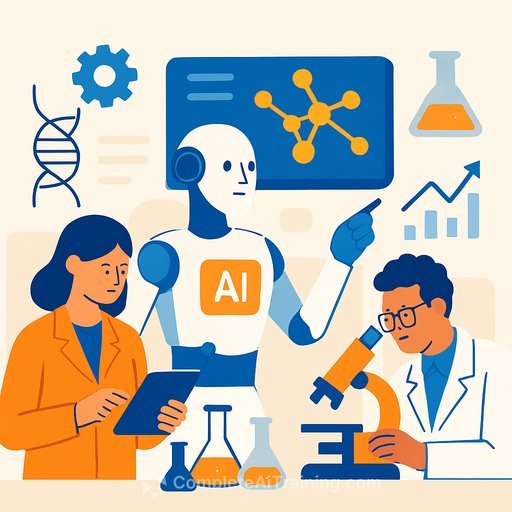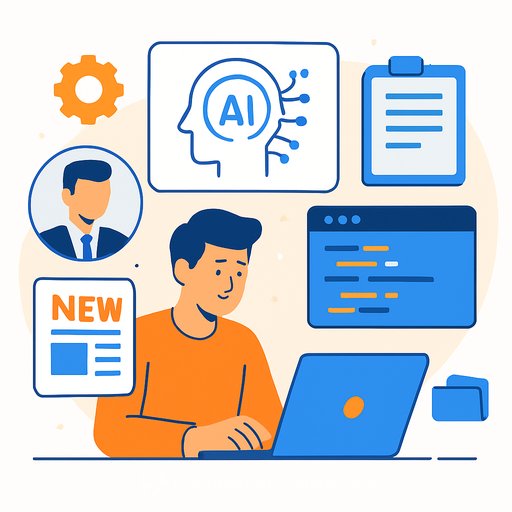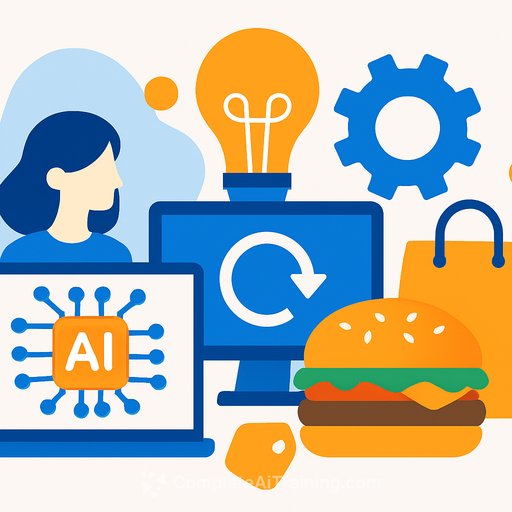Generative AI in Business: How Product Teams Drive Growth and Innovation
Generative AI has moved from a novelty to a core capability for product teams. It creates content, code, and designs from simple prompts, and it's changing how products are built and shipped. A 2023 report from McKinsey estimates it could add $2.6-$4.4 trillion to the global economy each year, which is hard to ignore for any team chasing margin and speed. Source
Use it to automate work, compress development cycles, and make customer experiences feel handcrafted at scale. The edge goes to teams that build AI directly into workflows, not as a side project but as a core system.
Personalize the Customer Experience
Traditional personalization stops at segments. Generative AI makes one-to-one experiences real by turning behavioral, transactional, and support data into dynamic copy, offers, and interfaces for each person.
Examples are already live. Stitch Fix uses AI to suggest outfits that match fit, budget, and taste. Finance teams deploy AI to draft individualized plans. Travel platforms build itineraries based on interests, budget, and history. Engagement, loyalty, and LTV rise when relevance stops being a guess.
- Start with a single outcome (e.g., +10% conversion on PDP). Define success metrics upfront.
- Map data sources and consent. Remove risky fields. Add guardrails for tone, claims, and compliance.
- Ship an MVP: model-generated copy + rules-based fallback. A/B test against a strong control.
- Close the loop: log prompts, responses, and outcomes to fine-tune content and ranking over time.
If you want structured learning and tools, see focused training tracks curated by job role on Complete AI Training.
Accelerate Innovation and Product Development
Generative AI shortens R&D cycles. In engineering, generative design lets you set constraints (materials, weight, cost, manufacturing method) and explore thousands of options in hours. Airbus used this approach to create a lighter, stronger A320 cabin partition that saves fuel over the aircraft's life.
Pharma teams use generative models to predict molecular properties and surface high-potential candidates sooner, cutting timelines. On the software side, AI assistants draft, refactor, and test code so engineers can focus on architecture and edge cases.
- Adopt "AI-first drafts" for specs, RFCs, tests, and scaffolding. Review like code, not like magic.
- Run design-space exploration for parts and UX variants. Keep human constraints as the source of truth.
- Use synthetic data to test edge cases safely. Track defect escape rate before and after adoption.
- Instrument everything. Compare cycle time, WIP, and rework. Keep what moves the needle; cut the rest.
Optimize Operations and Automate Workflows
AI removes tedious work so teams can ship. It drafts reports, summarizes documents, creates briefs, and turns raw data into usable outputs. IBM reports that 42% of companies already use AI for process automation, and many see real efficiency gains.
Beyond single tasks, product orgs are building AI agents that run multi-step workflows across tools with approvals and audits baked in.
- Data Entry and Processing: Extract info from invoices, receipts, and forms; post to ERP or accounting.
- Customer Support Triage: Classify tickets, set priority, route to the right queue, draft first responses.
- Content Management: Tag, organize, and archive images, videos, and docs based on content.
- Scheduling and Coordination: Manage calendars, book meetings, and coordinate across time zones.
- Start with a narrow, high-volume workflow. Document the current path, then automate steps with clear handoffs.
- Add human-in-the-loop checkpoints where risk is high. Log every decision for traceability.
- Set SLAs and quality thresholds. If quality dips, auto-fallback to a safe baseline.
Upskilling Is Now a Strategy, Not a perk
Hiring alone won't close the gap. The World Economic Forum expects AI and ML specialists to be among the fastest-growing roles, which puts pressure on every org to build internal skills fast. Source
Teams need fluency in prompt design, workflow automation, data governance, and AI risk. That's how you move from off-the-shelf tools to custom systems that fit your product and moat.
If you're building your team's capability, browse practical tracks and certifications on Complete AI Training or explore the latest AI courses here: Latest AI Courses.
What This Means for Product Teams
Generative AI is no longer an experiment. It's a lever for speed, margin, and differentiated experiences. The teams that win treat it like infrastructure-embedded in discovery, design, build, and operations.
- 0-30 days: Pick two use cases (one customer-facing, one internal). Define KPIs, risks, and owners. Ship an MVP with guardrails.
- 30-60 days: Integrate data sources, add monitoring and feedback loops, and move to staged rollout. Train the team on prompt patterns and failure modes.
- 60-90 days: Automate end-to-end workflows where quality is proven. Add policy, audit logs, and cost controls. Socialize wins and standardize templates.
The message is simple: invest in skills, instrument the work, and let results decide what stays. Teams that do this turn AI from hype into shipped value.
Your membership also unlocks:






